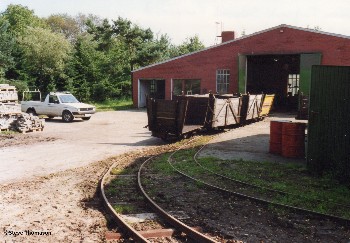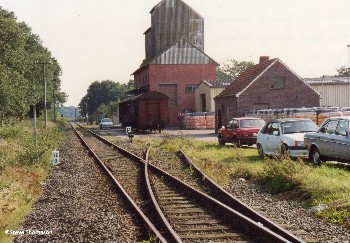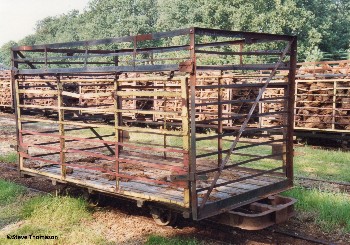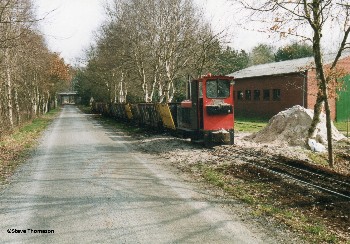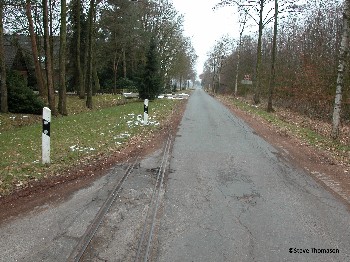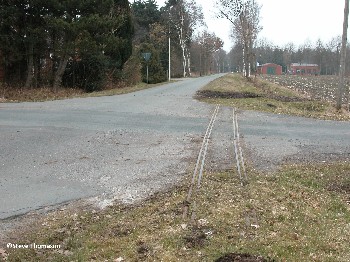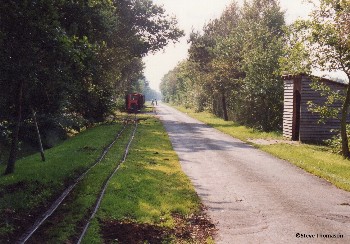
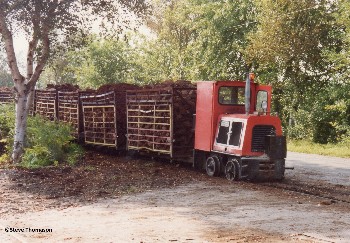
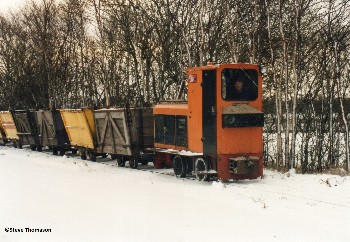
Date: September 1993
Date: September 1993
Date: March 1995
Several of the peat railways in Germany feature roadside running, sometimes for distances of several kilometers. Union Torfwerk is just one of several peat railways in the area of Saterland, north of the Kusten Kanal in NW Germany. 3 to 4 of these railways run alongside minor roads.There appears to be a fairly relaxed attitude in Germany to the proximity of these railways to road traffic, more so than would be the case in Britain!
In 1993, one of the railway's several Schöma locos slowly hauls a loaded train back to the processing plant, pausing briefly next to the railway works.
With a couple of inches of snow, the demarkation between the railway tracks and the road, is easily lost, as two years later in March 1995, another Schöma is pictured pulling a train of empty wagons out to the peat moors. Several types of peat wagon are employed at this site, and here wooden splaysided wagons are in use.
